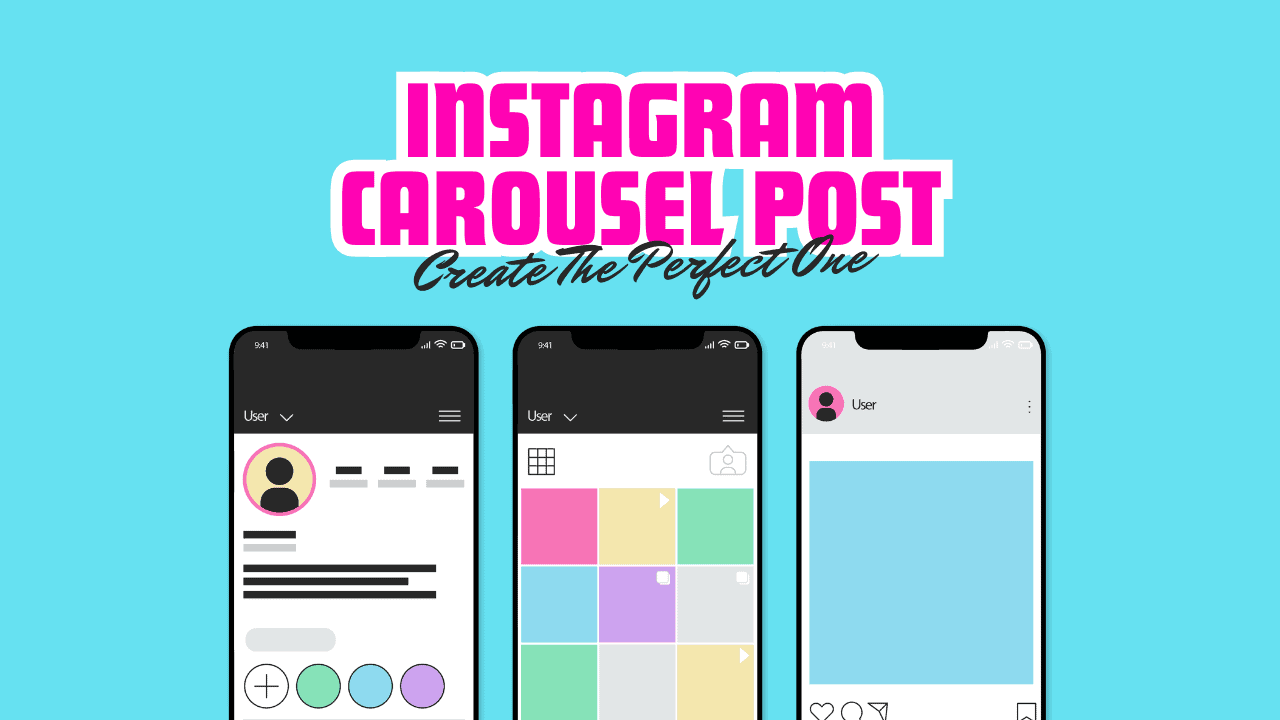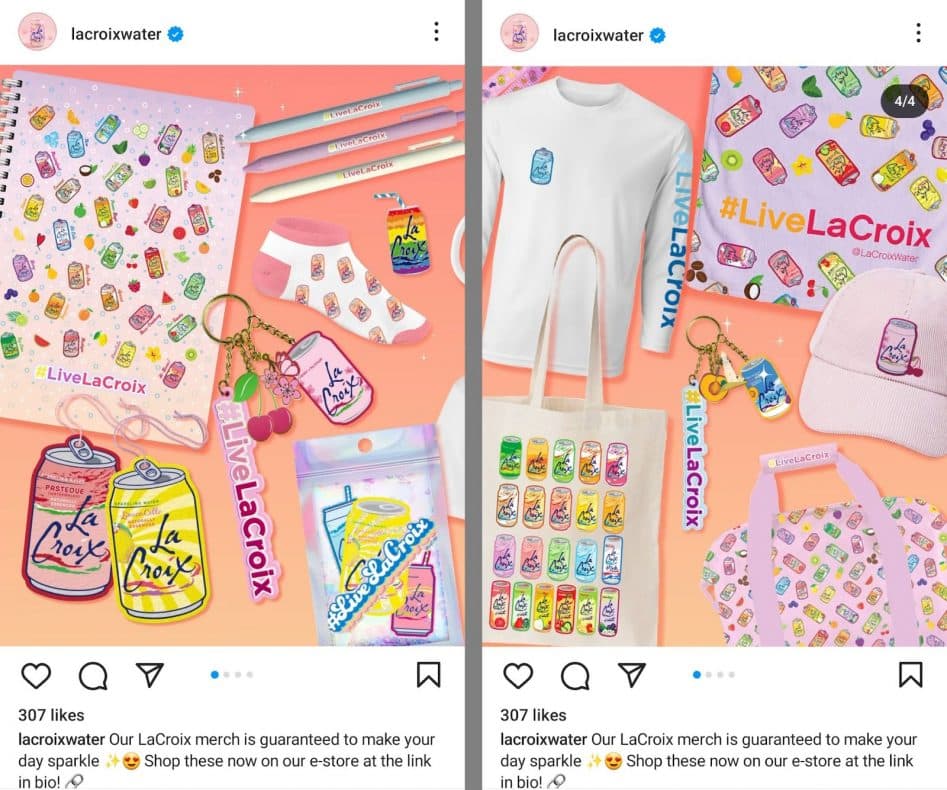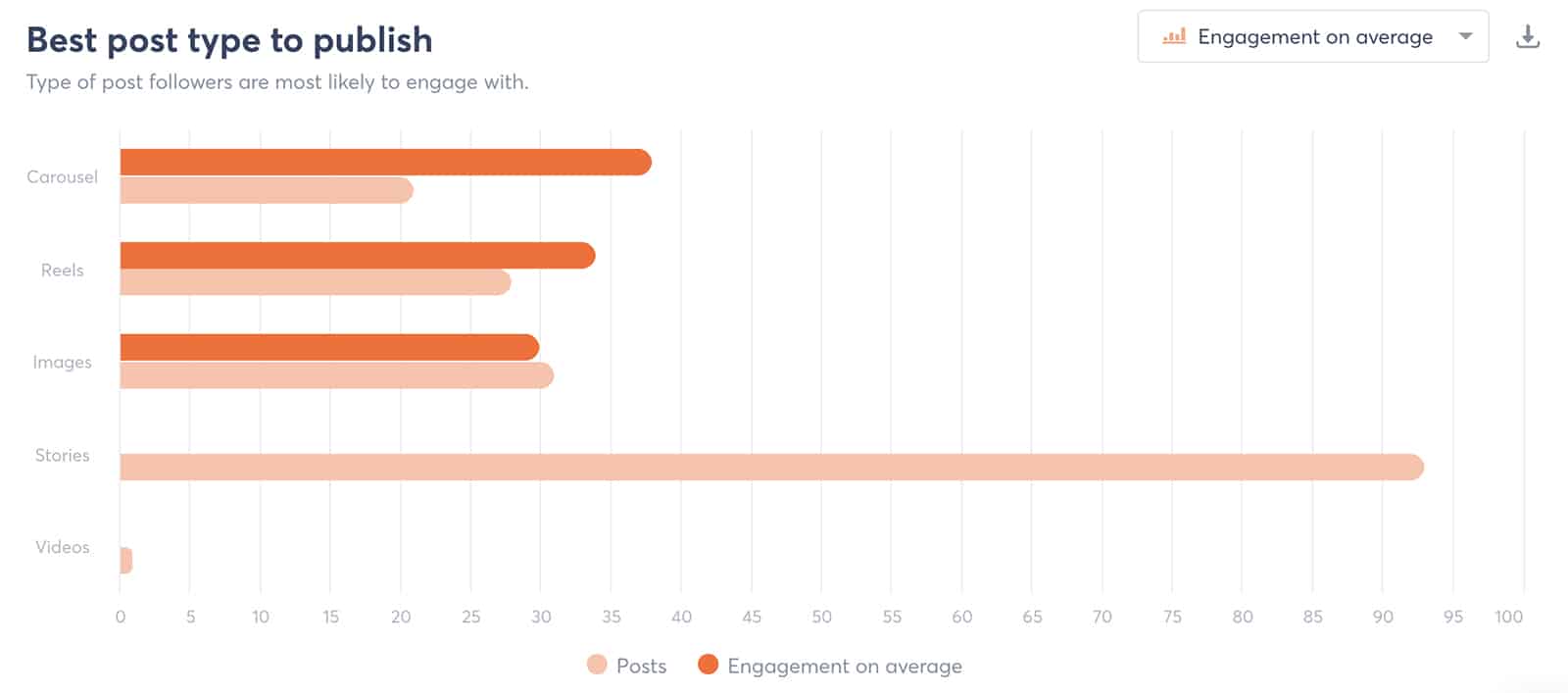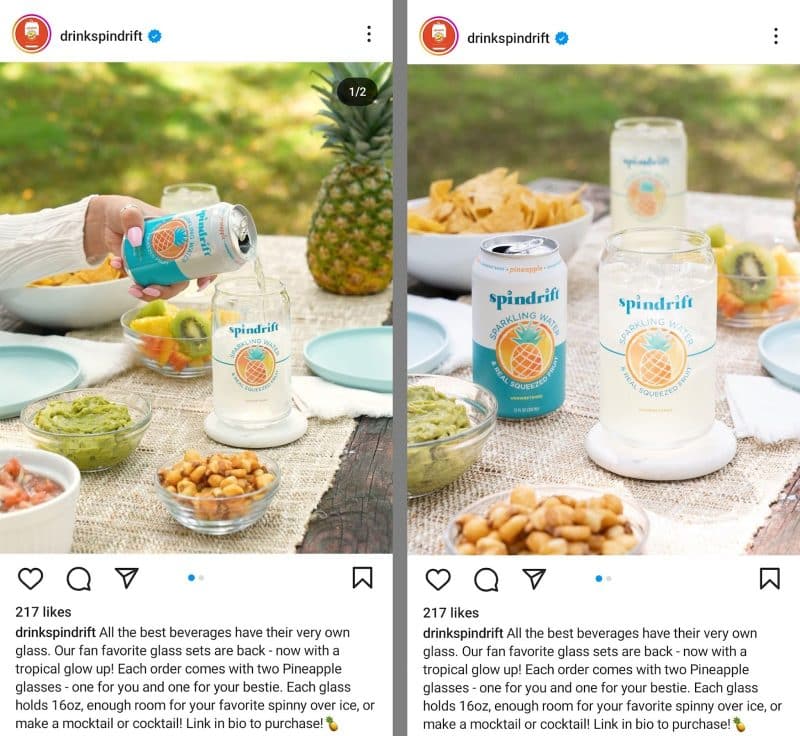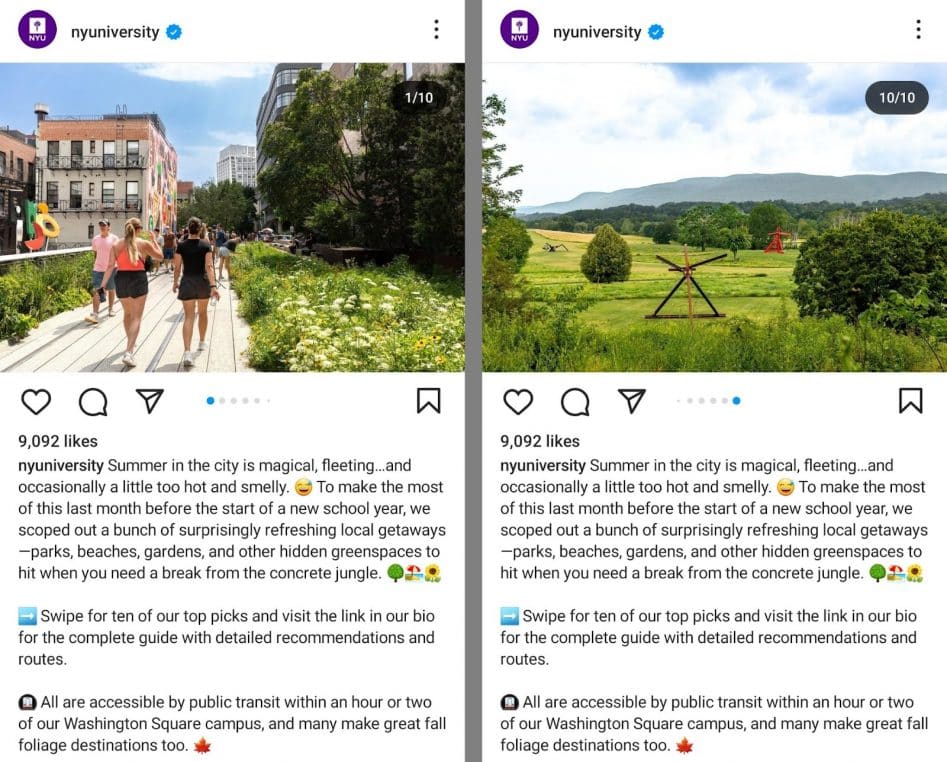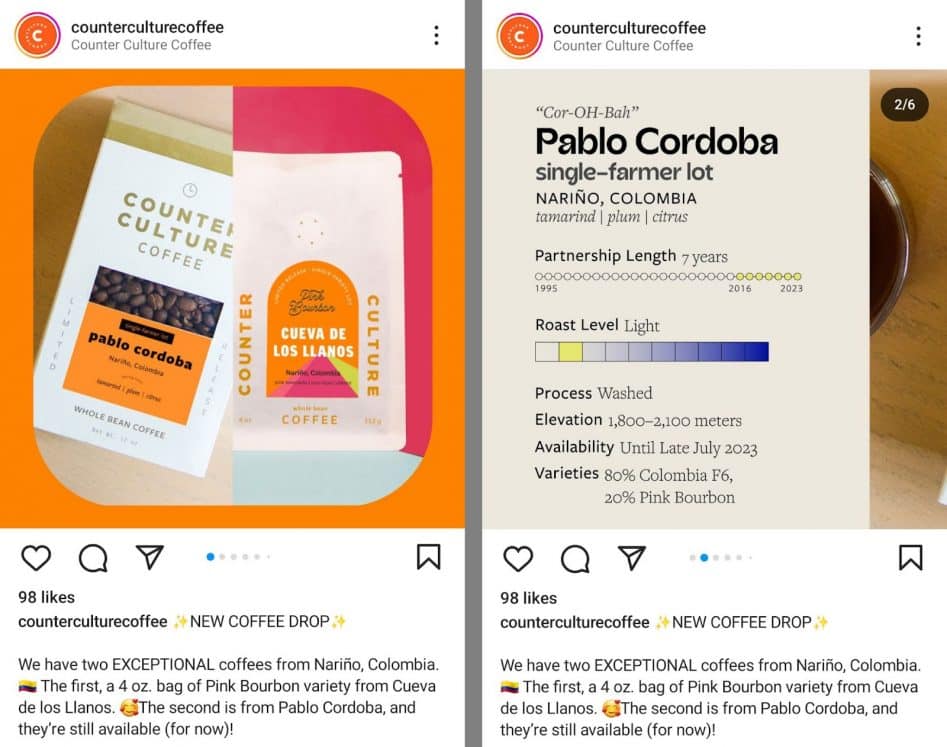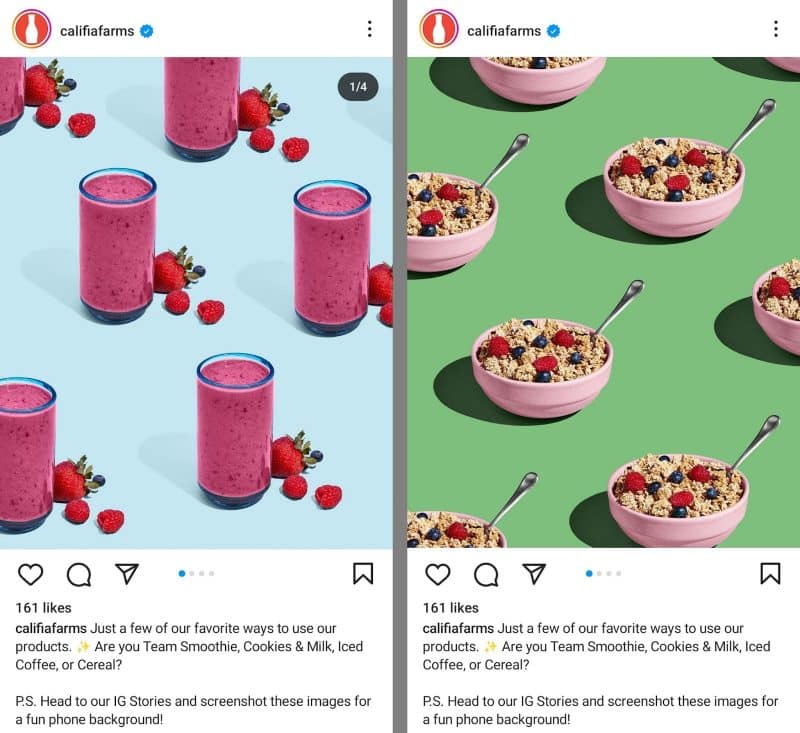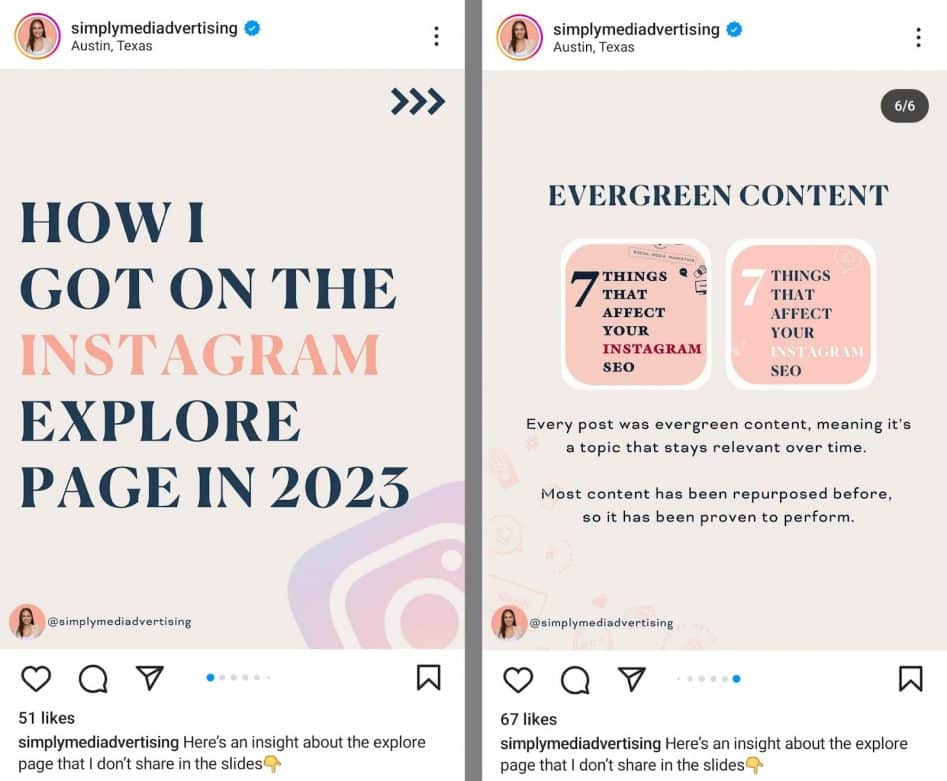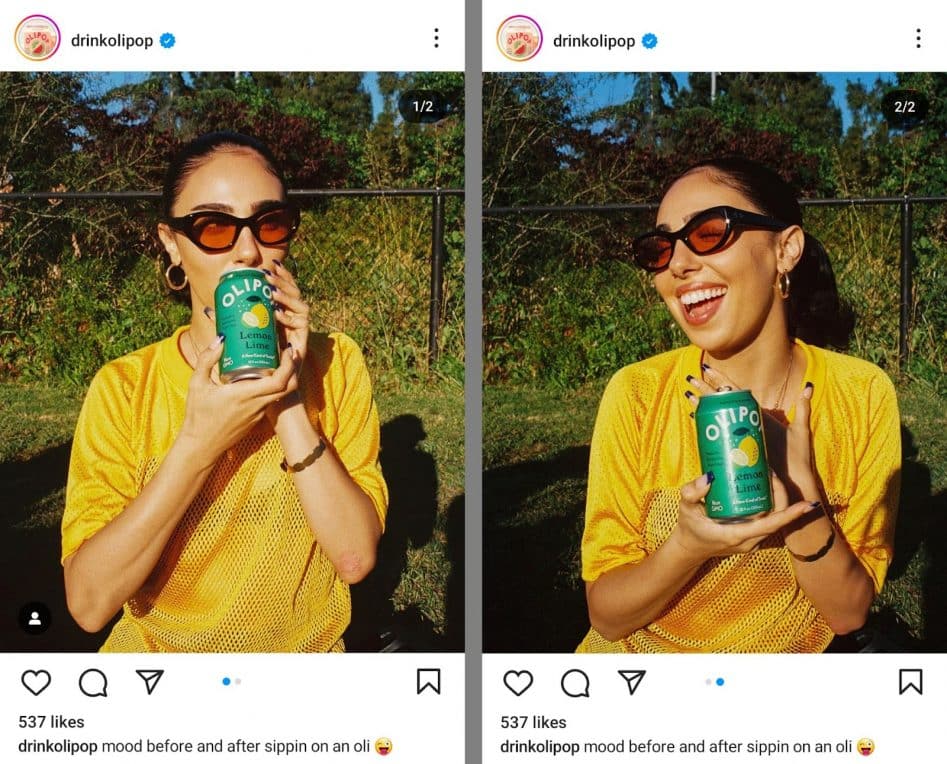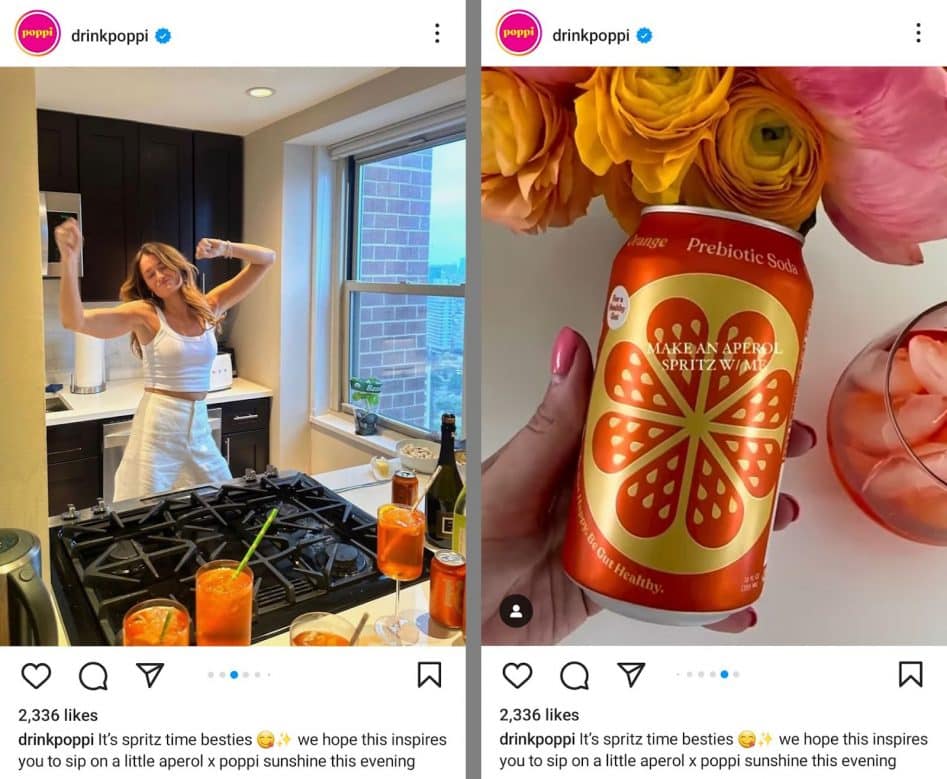Want to make your Instagram posts more fun and connect with followers beyond the Reels feed? Instagram carousels are known for their flexible format and high engagement rates, making them a great addition to any brand’s social media content strategy. Whether you want to share a story, launch a product line, or guide followers on something, carousel posts can do it all. So, how can you create the perfect post? Let’s explore the best ways to use this format and learn how to make a carousel on Instagram.
What Is an Instagram Carousel Post?
An Instagram carousel post is a type of feed post that features multiple images and videos. Instagram carousels can have up to 10 cards, including images, videos, or a mix of both.
For instance, the @lacroixwater carousel below has four videos showcasing the sparkling water brand’s products. Each video displays a different selection of items, allowing the brand to feature a wider variety and give customers ideas for product pairings.
These posts are interactive, so users can swipe left to view each carousel card. Instagram also introduced an auto-scroll feature that automatically displays carousels as slideshows directly in the feed.
What Sets Carousels Apart from Reels?
The primary distinction between reels and carousel posts lies in the media type. Reels exclusively showcase videos, while carousels can have video cards but can also feature images alone.
Carousels appear in the main feed and on your profile grid in the Instagram app. In contrast, reels can be seen in both of these places. However, reels have their dedicated feed and tab.
Reels offer a variety of native creation tools. You can include text overlays, stickers, voiceovers, and more when making reels. Carousels don’t support these creative tools but do work with native Instagram add-ons like product tags and music.
How Do Carousels Differ from Stories?
Instagram stories share more similarities with reels than with carousels. Stories have a dedicated feed and display as videos or animated images. Stories also include built-in creative features such as text overlays, interactive stickers, and effects.
However, stories and carousels share a key feature. Both appear as slideshows, allowing users to swipe left for more content and experience the entire narrative.

